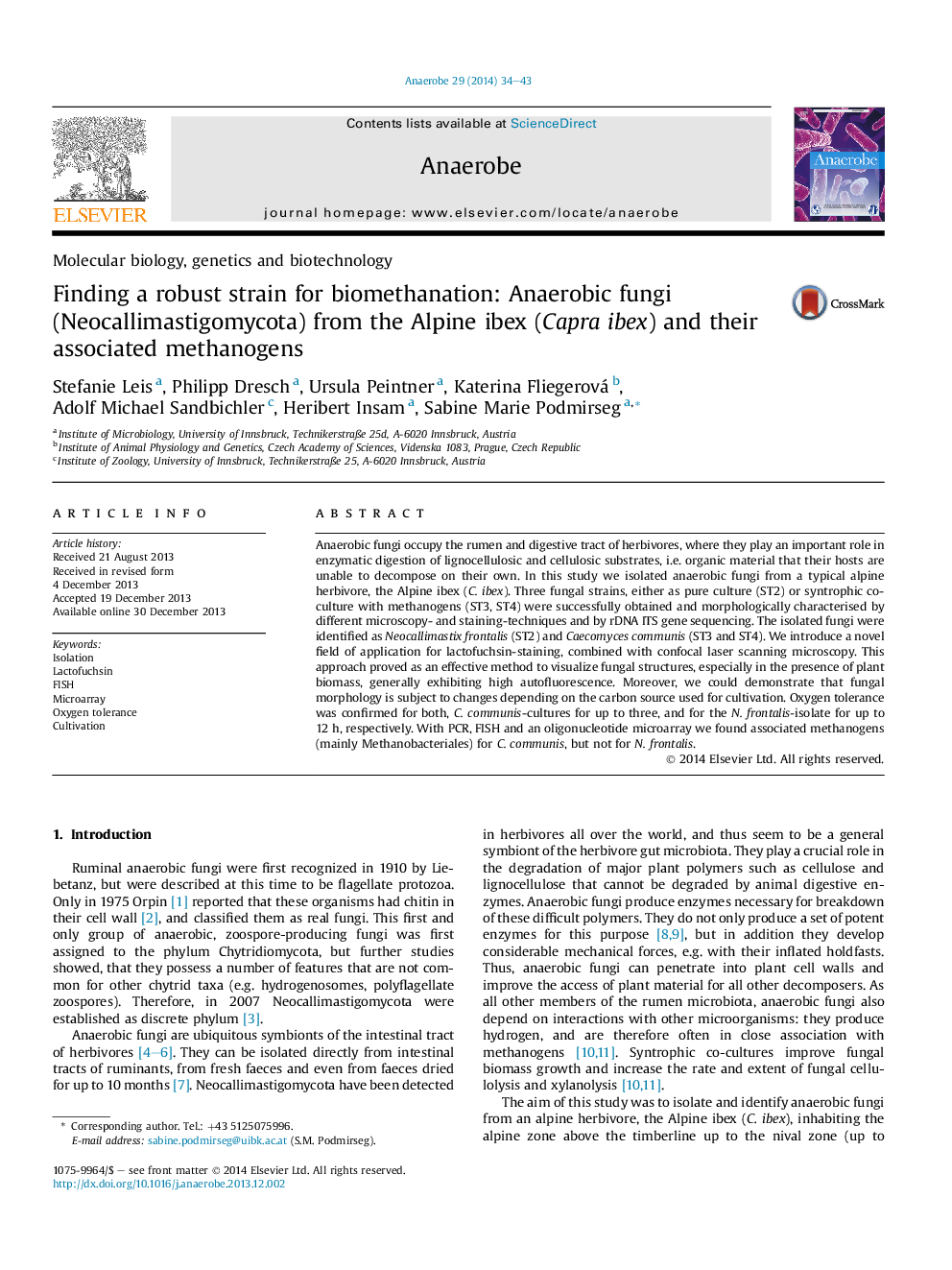| Article ID | Journal | Published Year | Pages | File Type |
|---|---|---|---|---|
| 3395117 | Anaerobe | 2014 | 10 Pages |
•Isolation of three fungal strains from capricorn (Capra ibex).•Fungal oxygen tolerance confirmed for up to 12 h.•Methanobacteriales detected as dominant fungi-associated methanogen.•Novel staining application for lactofuchsin was successfully established.
Anaerobic fungi occupy the rumen and digestive tract of herbivores, where they play an important role in enzymatic digestion of lignocellulosic and cellulosic substrates, i.e. organic material that their hosts are unable to decompose on their own. In this study we isolated anaerobic fungi from a typical alpine herbivore, the Alpine ibex (C. ibex). Three fungal strains, either as pure culture (ST2) or syntrophic co-culture with methanogens (ST3, ST4) were successfully obtained and morphologically characterised by different microscopy- and staining-techniques and by rDNA ITS gene sequencing. The isolated fungi were identified as Neocallimastix frontalis (ST2) and Caecomyces communis (ST3 and ST4). We introduce a novel field of application for lactofuchsin-staining, combined with confocal laser scanning microscopy. This approach proved as an effective method to visualize fungal structures, especially in the presence of plant biomass, generally exhibiting high autofluorescence. Moreover, we could demonstrate that fungal morphology is subject to changes depending on the carbon source used for cultivation. Oxygen tolerance was confirmed for both, C. communis-cultures for up to three, and for the N. frontalis-isolate for up to 12 h, respectively. With PCR, FISH and an oligonucleotide microarray we found associated methanogens (mainly Methanobacteriales) for C. communis, but not for N. frontalis.
